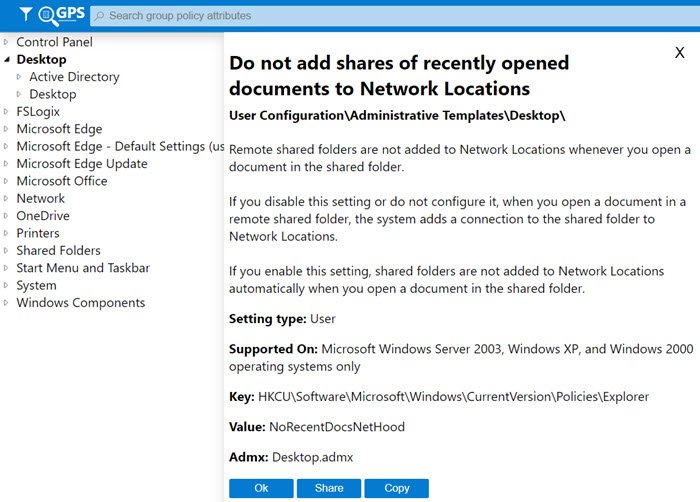If you want to find the Registry key for the corresponding Group Policy setting, you need to follow this step-by-step guide. Here are multiple methods and ways to find the specific Registry key for Group Policy settings in Windows 11 and Windows 10 computers.
Windows 11/10 has multiple ways to save configuration and settings. The Registry and Group Policy are two popular ways, and they are complementary to each other. If you change a setting in Group Policy, Windows will automatically make changes in the Registry.

Compared to the Windows Registry, Group Policy is easy to change as you don’t have to create anything. However, it isn’t easy to find them. So, if you are geeky enough, in this post, we will share a simple command that can help you instantly figure it out.
Group Policy Registry Location in Windows 11/10
You can use any of these methods to find the Registry key for a Group Policy setting. Group Policy for Registry Mapping has been discussed in this post.
- Group Policy Search (GPS) service
- Group Policy Settings Reference Guide
- MSDN
- Get-GPRegistryValue
Before we go ahead, be aware that not every Group Policy is available in the Registry. Some of the settings are stored in a different place. So you will only find those which are mapped to the Registry.
1] Group Policy Search (GPS) service
Use the Group Policy Search (GPS) service, which allows you to search for registry-based Group Policy settings used in Windows operating systems. Once you open the website, you can search or expand each of them to find Group Policy Settings, Key, Value, and ADMX files.
2] Group Policy Settings Reference Guide

You can download an excel sheet from Microsoft—Group Policy Settings Reference Guide, which lists policy settings corresponding to the registry key.
Related: Group Policy Settings Reference Spreadsheet & ADMX Templates for Windows 11.
3] MSDN – GPO to Registry Mapping
Microsoft has published a table—Group Policy Registry Table—which offers one-to-one GPO to Registry Mapping. All you need do is search for the registry path, and it will reveal the exact Group Policy Object. Visit this MSDN link.
4] Get-GPRegistryValue
It’s a command that you can execute on PowerShell. It gets one or more registry-based policy settings under either Computer Configuration or User Configuration in a GPO. This is how the command looks like:
| Get-GPRegistryValue -Guid <Guid> -Key <String> [-ValueName <String>] [-Domain <String>] [-Server <String>] [<CommonParameters>] |
Get-GPRegistryValue [-Name] <String> -Key <String> [-ValueName <String>] [-Domain <String>] [-Server <String>] [<CommonParameters>] |
It is fairly easy to use but only if you can understand how to use it. Here is a sample from Microsoft Document, which explains more on the official page.
Get-GPRegistryValue -Name TestGPO -Key "HKEY_CURRENT_USER\Software\Policies\Microsoft\ExampleKey" -ValueName "ValueOne" KeyPath : Software\Policies\Microsoft\ExampleKey FullKeyPath : HKEY_CURRENT_USER\Software\Policies\Microsoft\ExampleKey Hive : CurrentUser PolicyState : Set Value : TestGPO Type : String ValueName : ValueOne HasValue : True
I hope the post was easy to follow, and you are now able to find the Registry key corresponding to Group Policy and vice versa.
I wish there were a tool from Microsoft for admins, which would have made it easier, but yes, then there are Excel sheets getting that job done.
Read: Failed to open the Group Policy Object on this computer
How to find Registry key for Group Policy?
You can use the Get-GPRegistryValue command to get the job done. This is a simple command that you can use in Windows PowerShell or Terminal. However, you can also head to the official Microsoft website (mentioned above) to find the exact Registry key for a specific Group Policy setting.
Where are Group Policy settings stored in the Registry?
If you are talking about finding the Group Policy settings in the Registry Editor, you need to go through the aforementioned ways. However, if you want to find the corresponding Registry file, you need to open the File Explorer and navigate to this path: C:\Windows\System32\GroupPolicy\User. Here you can see a file named Registry.pol. This is the file you are talking about.